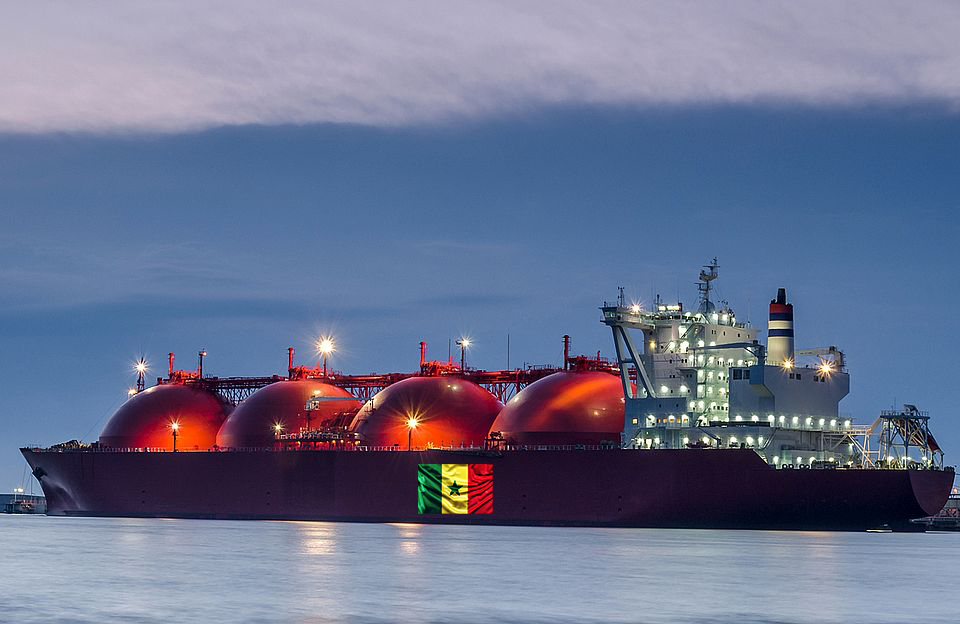ANALYSIS
How does Senegal want to finance its energy transition?

By 2030, Senegal plans to increase its production of liquefied natural gas (LNG) to 10 million tons per year, with a view to reinvesting a large part of the expected revenues in the development of renewable energy. This is a laudable initiative for the country, but one that carries risks for others.
Currently, nearly 30% of Senegal's energy mix comes from renewable energy. But due to a lack of financial resources, the country must find new resources to finance its ambitious projects in this field. This will allow it to get rid of its dependence on fossil fuels, which it has been importing from abroad, and to become an exporter in the future, as the Senegalese government hopes.
Thus, after the discovery of large gas deposits on their territory, the Senegalese authorities are counting on the revenues that should be generated by this resource to be reinjected into renewable energy. This is a perverse situation, given that energy intended for export, including mainly LNG, is also polluting for the rest of the planet. Senegal may be tempted to follow the Norwegian example. A major producer of gas and oil, the Scandinavian state is also heavily invested in the energy transition.
2.5 million tons of LNG/year
It is already known that the Great Turtle Ahmeyim (GTA) offshore gas project will produce 2.5 million tonnes of LNG per year within three months. By 2030, the oil company British Petroleum (BP), which owns 62% of the project, expects to produce 10 million tons of LNG. Oil production would be in the order of 100,000 barrels per day, or about 5 million tons per year.
Located on the border between Senegal and Mauritania, this field has been jointly exploited since 2020 by the two neighboring countries. Senegal is counting on these discoveries to position itself on the international gas scene, in light of the major energy shortages caused by the pandemic and the war in Ukraine. Senegal is indeed one of the countries that would like to take advantage of the strong increase in energy demand required by the economic recovery.
Europe interested in Senegalese gas?
Germany and Poland, two European countries in a hurry to make up for their current deficits, have already made requests to Senegal. The question is whether these are likely to help the African country achieve its energy goals. For Senegalese officials, the new revenues can help build a more stable power grid by reducing the cost of electricity by 50 percent by 2030. Such a prospect may, in the long run, allow a reduction in the number of energy-intensive and polluting heavy fuel oil (HFO) power plants and the installation of new green energy power plants (wind, solar, hydroelectric...)
According to informed observers, Senegal is ahead of other countries in terms of investment in renewable energy. Its strategy is centered on a flagship project: the Plan Sénégal émergent (PSA). Launched in 2016, this project has reached 220 MW after four years, thanks to the commissioning of a dozen photovoltaic power plants and the Taïba Ndiaye wind power plant (near Dakar) with a capacity of 50 MW. According to official statistics, the latter has increased the country's electricity production by 15% and has saved the country 300,000 tons of CO2 emissions per year.
-

 ANALYSIS11 month ago
ANALYSIS11 month agoThe 3 African countries richest in natural resources
-

 FOCUS ONA1 an ago
FOCUS ONA1 an agoThe 10 largest oil refineries in Africa
-

 NEWS7 month ago
NEWS7 month agoTop 10 des pays africains producteur de l’or : Mali 2-eme, Burkina Faso 3-eme
-

 NEWS2 ans ago
NEWS2 ans agoRanking of oil producers: Here are the Top 10 African countries.
-

 FOCUS ONA8 month ago
FOCUS ONA8 month agoTop 10 oil producers in Africa in 2023
-

 NEWS1 an ago
NEWS1 an agoTop 20 oil producing countries in 2022
-

 NEWS5 month ago
NEWS5 month agoAfrica's 10 largest natural gas production fields.
-

 NEWS7 month ago
NEWS7 month agoIvory Coast: Eni to deploy a cylindrical FPSO and a converted FSO on the Baleine oil field












